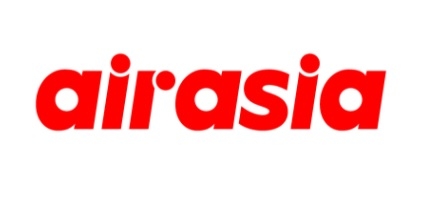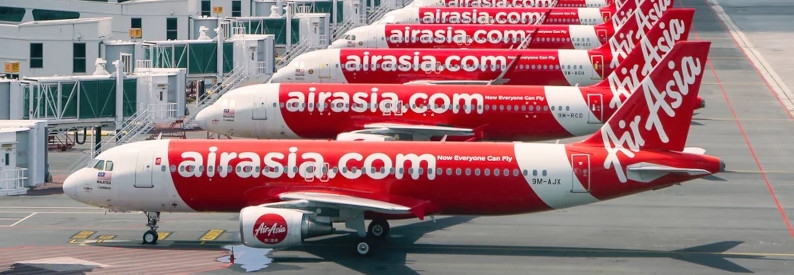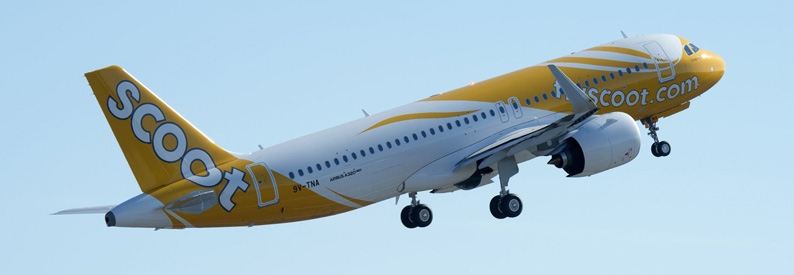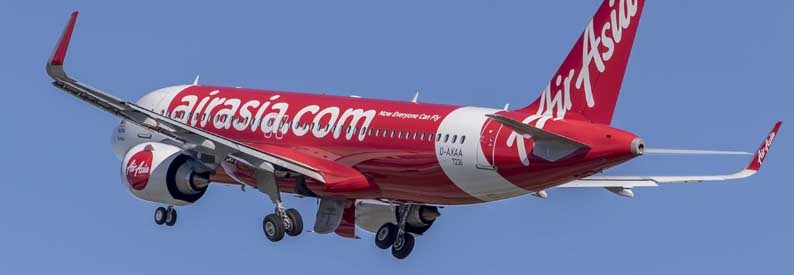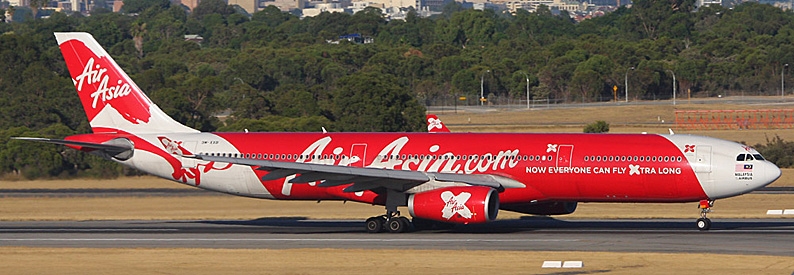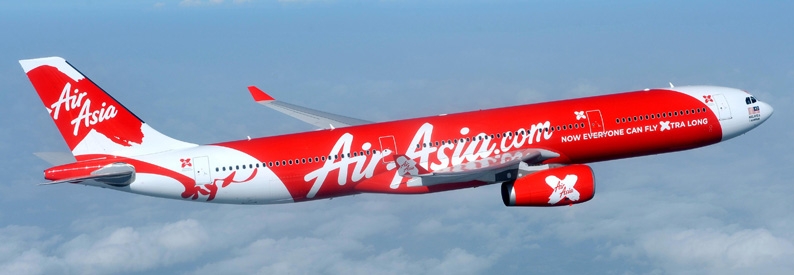AirAsia (AK, Kuala Lumpur International) will order fifty A321-200NY(XLR)s with conversion rights for a further 20 units of the type as it aims to develop a global network of long-haul services with narrowbody aircraft. This is the first of two large orders that AirAsia plans to announce shortly, with a contract for up to 150 jets expected to be formalised within one month.
The first delivery of the XLR is currently scheduled for 2028 through 2032, but the chief executive officer of current parent holding Capital A, Tony Fernandes, said that the airline hoped to accelerate the type's entry into service to 2027.
"A narrowbody obviously gives us a lot less risk in terms of certain routes, and gives us the opportunity to go to many more destinations that we couldn't have gone to before because the 380-seat [A330] aircraft would be limiting. So it's really transformative. We really believe we can build the first low-cost, narrowbody network carrier, and this aircraft order, with our existing aircraft, will allow us to comfortably do so," Fernandes said during a media briefing.
The airline aims to build "virtual hubs" in the Middle East, Europe, and East Asia to cover most of the globe with a one-stop service. Fernandes did not disclose any specific locations, although he previously said that the Middle Eastern hub would not be at Sharjah or Dubai International. In terms of its East Asian hub, Japan appears to be "the natural fifth-freedom port", although AirAsia remains in talks with other locations. It currently operates fifth-freedom services between Osaka Kansai and Taipei Taoyuan, and used to serve Honolulu via Kansai.
"With one stop somewhere in the Middle East, we can fly to most of Europe and all of Africa. With one stop in Europe, we can fly to [the east coast of North] America. And to the west coast of [North] America, we can fly via Japan or Honolulu. This order enables us to have a narrowbody fleet that can cover the world," Fernandes listed.
Fernandes said that the group would prefer to establish virtual hubs through fifth-freedom rights using existing airline certificates rather than opening new ones.
"My preference is not to start an AOC in the first place, just base aircraft there for pure stopovers. We'll have to see how successful or not it is. But if it's successful, then we would look at an AOC, but we have been offered both AOC, and fifth and seventh freedom rights [in the Middle East]," he explained.
While the carrier aims to increase its connecting traffic via hubs at Kuala Lumpur International and Bangkok Don Mueang, and to a smaller degree Jakarta Soekarno-Hatta and Manila Ninoy Aquino International, it will also use the XLRs to develop more point-to-point traffic from secondary airports. Fernandes identified Denpasar (Bali), Penang, and Johor Bahru as particularly attractive origins for such routes. He added that some destinations, such as Busan in South Korea or cities like Nagoya Chubu or Hiroshima International in Japan, could not sustain A330 service but would be better served with an XLR. The airline does not aspire to abandon its focus on point-to-point traffic and will consider its connecting traffic "supplementary". Currently, around 7% of all passengers on AirAsia flights are connecting with the carrier.
AirAsia has not decided yet how many of the newly ordered aircraft will be allocated to each of its AOCs.
Fernandes said the new order was incremental to the existing commitments for Airbus aircraft. The airline has firm orders for 322 A321-200NX and thirty-six A321-200NX(LR)s (the first four due in 2026). The 20 conversion rights for the XLR cover aircraft already on order. The carrier's current narrowbody fleet comprises 170 A320-200s, forty A320-200Ns, three A321-200(P2F)s, and fifteen A321-200NX across its AOCs in Malaysia, Thailand, Indonesia, the Philippines, and Cambodia.
Regarding the financing of the order, Fernandes said that AirAsia was now being rated and hoped to place bonds on the market around October. However, all options remain on the table, mostly depending on interest rates. The carrier could use its traditional financing via sale and leasebacks, but is also evaluating operating leases and outright purchases.
Widebody fleet plans
The carrier plans to begin its long-haul expansion this year, using the existing fleet of twenty-seven A330-300s on the AOC of AirAsia X and Thai AirAsia X. The first European destination will launch by the end of 2025. "Because of aircraft shortage, we had to cut short our African experience. But we'll be going back next year, and we have many destinations in play for Europe. I can announce Istanbul is around the corner, one destination in Western Europe, and three or four Eastern European destinations," Fernandes said.
AirAsia X, which will acquire AirAsia and AirAsia Aviation Group (the entity partnering in airlines outside Malaysia) as part of the ongoing restructuring, has an outstanding order for fifteen A330-900Ns. Despite the clear strategic focus on narrowbody operations, Fernandes said the group remained in discussions with Airbus regarding the order.
"No cancellations at the moment," he said. "With [the XLR] aircraft, we don't need any A330s. But there is a discussion on the widebody from Manila. We couldn't use the XLR- it couldn't reach America. It can just about reach Hawai'i. So the problem of going to the west coast is that we'll have to decide whether we keep the widebodies, and that's the question I'm discussing with Airbus, just for the Philippine operation," Fernandes said.
Likewise, there is no decision on the retirement of the existing A330-300s.
The airline remains in negotiations with two manufacturers over its last remaining order for up to 150 aircraft. Fernandes said the discussions are "very aggressive" and the announcement would likely be made within a month. "That will complete our network strategy," he added. While he did not confirm this explicitly, the order is expected to be for regional jets.
